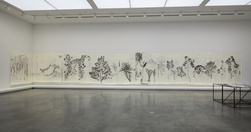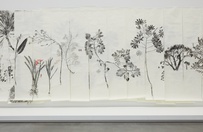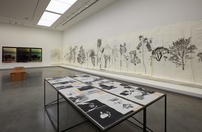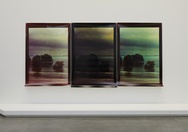Simryn Gill
Sydney and Port Dickson, Malaysia
2023
Displayed 2023 at Museum of Contemporary Art Australia
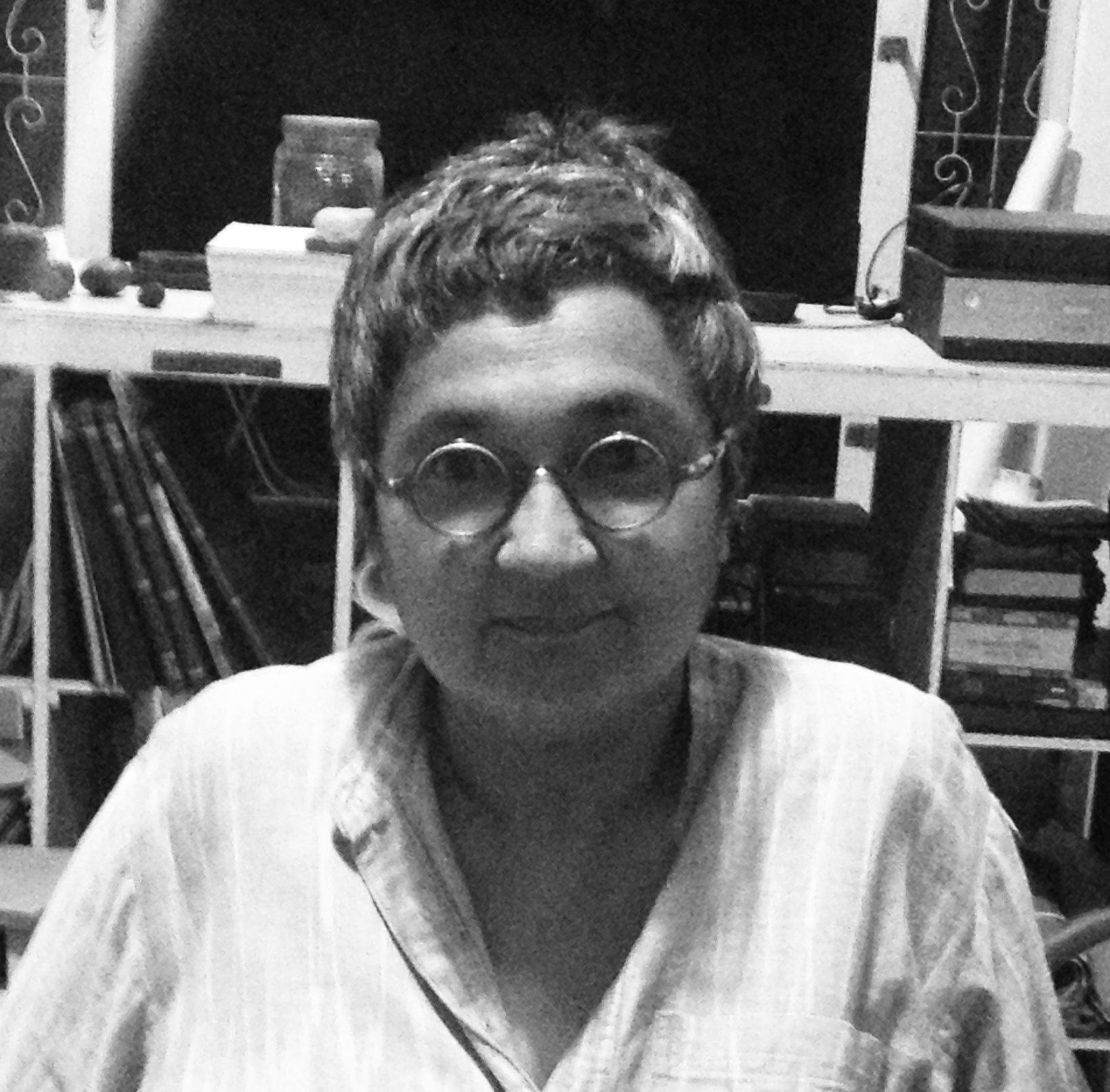
Simryn Gill
Born 1959, Singapore
Lives and works Sydney and Port Dickson, Malaysia
Simryn Gill’s methods include photography, drawing, printing, making objects and writing. She works with simple materials and direct processes, often influenced by her immediate surroundings, in a practice attuned to art-making in a personal, cerebral and political register. With Tom Melick she runs Stolon Press, a small publisher of books and pamphlets in Sydney. Gill's work has been shown in numerous solo and group exhibitions, most recently at Art Gallery of New South Wales, Sydney (2022); Buxton Contemporary, Melbourne (2021); Gropius Bau, Berlin (2020); Drawing Room, London (2019); TarraWarra Museum of Art, Victoria (2019); Met Breuer, Metropolitan Museum of Art, New York (2019); National Gallery Singapore (2018); Kohta, Helsinki (2018); Lunds Konsthall, Lund (2017). Gill represented Australia at the Venice Biennale in a solo presentation in 2013. She has showed in documenta 12 and dOCUMENTA (13) (2007, 2012)13 (2007, 2012), and in biennales that include the Biennale of Sydney (2018) and Moscow Biennale (2013). Public collections that hold Gill’s work include: Art Gallery of New South Wales, Sydney; The Getty Centre, Los Angeles; Ishara Art Foundation, Dubai; M+ Museum, Hong Kong; Metropolitan Museum of Art, New York; Museum of Contemporary Art Australia, Sydney; Museum of Modern Art, New York; National Gallery Singapore, Singapore; Tate, London.
Image courtesy the artist
Artist text
by Emilia Terracciano
Maria’s Garden (2021) is a compendium of direct prints of all the plants that once grew in the garden of Maria, an Italian pensioner and widow who had migrated to Sydney. Created by Simryn Gill, the work comprises 93 literal impressions of plant specimens on loose sheets of paper, each measuring 240 × 48cm.
Gill and Maria were neighbours. After Maria’s passing, her garden continued to flourish. Property contractors slated it for demolition to build a day-care centre; Gill found out and, over the course of six months, studied its vegetation, carefully annotating the names and locations of each fruit tree, flowering plant, and weed. Her detailed study revealed an overall plot: fruit trees at the back of the house, lemons, persimmons, mulberries, prickly pears, and grape vines; flowering plants at the front, hydrangeas, roses, dahlias, and succulents. Maria had sought to make the unfamiliar environment familiar: her Mediterranean garden was composed entirely of plants non-native to Australia.
The process used to produce Maria’s Garden recalls that of ‘nature printing,’ the practice of taking impressions directly from the surface of natural objects such as leaves, flowering plants, ferns, seaweed, snakeskin, and more, to produce visual representations on paper. The surface of a freshly-cut or dried plant, or other natural object, is covered with ink and pressed – either by hand or by a hand-operated press – onto paper, leaving a clear and detailed impression. The result is a one-to-one scale print with the properties of the specimen stuck onto the surface of the paper. The size and fragility of the original specimen dictates the modus operandi. No two prints are the same.
Recognised as the earliest precursor to photography, direct printing was applied in the study of useful and medicinal botanical species. The process developed alongside the evolution of botanical science and research into plant physiology; printing directly from specimens, scientists and plant enthusiasts could visualise plants in a cheap and simple way for greater visual and textural impact. By the 18th century, European botanists were employing direct printing as the ideal medium to explore venation, since it singled out the properties of a leaf, its shape, and its relation to the stalk. This desire for life-like scientific images catalysed technological innovations and developments in nature printing over the next hundred years.
Scholars have described colonisation as a massive operation of planting and dis-planting. In Australia, a country in which the appropriation of Indigenous lands was steeped in ideologies of European racial superiority and legal narratives that equated the ‘good’ civilised life with English concepts of propriety, colonial botanists did much to advance settler practices of vegetal domestication.
Maria’s Garden is thus bound up with histories of botany, colonialism, commerce, travel, and technology, and occasions broader deliberations on belonging, nature, naturalness, and the ecological place of our own species in the world. Which plants evolved or arrived from where? Which ones make us feel at home? Where, or what, is home? What does it mean, historically and personally, to be ‘Italian’ or ‘Australian’ in a culture that would like us to choose? And, what becomes of a piece of oneself that is left behind and then abandoned? Maria’s Garden gets under the skin of things; a haunting impression and testimony to migration, survival, and the life-giving processes of time, death, and generations.
Simryn Gill
6min
Auslan - Simryn Gill
2min
About the work of Simryn Gill in The National 4.
Artist's acknowledgements
The artist would like to thank Sandra Barnard, Marcus Dyer-Harrison, and Emilia Terracciano. Courtesy 1301PE, Los Angeles, Jhaveri Contemporary, Mumbai, and Richard Saltoun Gallery, London
